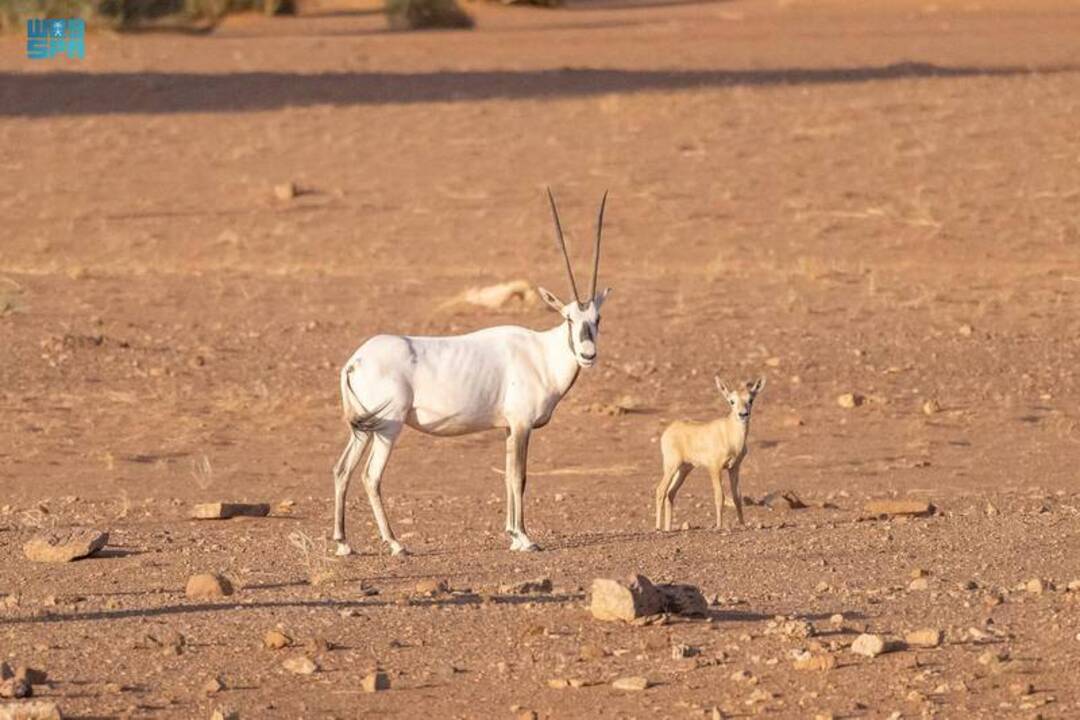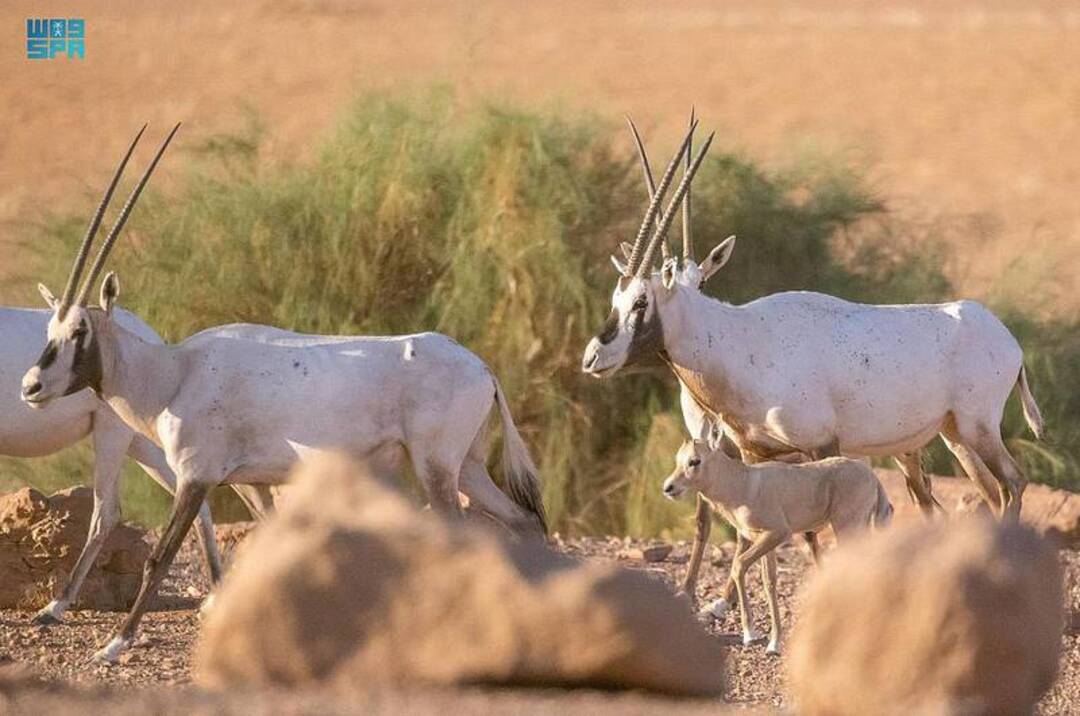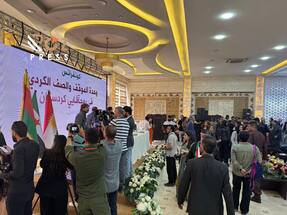-
Saudi Arabia welcomes birth of first Arabian oryx in kingdom in 90 years

The Asharq Al-awsat reported, Saudi Arabia's King Salman Royal Reserve in the Northern Borders Region witnessed the birth of an Arabian Oryx for the first time in 90 years.
It said that the birth is the result of cooperation between the King Salman Royal Reserve Development Authority and the National Center for Wildlife.
It comes after the release of a group of Oryxes in the reserve in March this year, as part of the reintroduction programs for endangered species in their natural habitats.
The white oryx’s return to these areas and the resumption of its natural reproduction contribute to the balance of the environment and enrich the biodiversity.

It also gives a major boost to the preservation of these species, which disappeared from the region for decades due to many environmental factors, arbitrary hunting, and loss of vegetation cover.
The Arabian Oryx or white oryx is the largest land mammal in the Arabian Peninsula, an adult Oryx can weigh up to 80 kilograms.
Saudi Arabia begins Hajj registration for citizens and residents
It is characterized by a white coat on most of the body except for the face and feet that are usually a dark color. It is characterized by long, straight or slightly curved horns.
The horns of males are thicker and shorter than those of females, and they have broad hooves that facilitate their movement on soft sand.
It should be noted that the King Salman Royal Reserve is the fourth largest wildlife reserve in the world, extending over 130,700 square kms.
Over 40 camels disqualified from Saudi Arabia's beauty pageant due to Botox injections
It is a unique desert habitat and a resort to many species of plants, and endangered animals like the Arabian Oryx, black-tailed gazelle, and the Eurasian griffon.
Source: aawsat
You May Also Like
Popular Posts
Caricature
BENEFIT Sponsors BuildHer...
- April 23, 2025
BENEFIT, the Kingdom’s innovator and leading company in Fintech and electronic financial transactions service, has sponsored the BuildHer CityHack 2025 Hackathon, a two-day event spearheaded by the College of Engineering and Technology at the Royal University for Women (RUW).
Aimed at secondary school students, the event brought together a distinguished group of academic professionals and technology experts to mentor and inspire young participants.
More than 100 high school students from across the Kingdom of Bahrain took part in the hackathon, which featured an intensive programme of training workshops and hands-on sessions. These activities were tailored to enhance participants’ critical thinking, collaborative problem-solving, and team-building capabilities, while also encouraging the development of practical and sustainable solutions to contemporary challenges using modern technological tools.
BENEFIT’s Chief Executive Mr. Abdulwahed AlJanahi, commented: “Our support for this educational hackathon reflects our long-term strategic vision to nurture the talents of emerging national youth and empower the next generation of accomplished female leaders in technology. By fostering creativity and innovation, we aim to contribute meaningfully to Bahrain’s comprehensive development goals and align with the aspirations outlined in the Kingdom’s Vision 2030—an ambition in which BENEFIT plays a central role.”
Professor Riyadh Yousif Hamzah, President of the Royal University for Women, commented: “This initiative reflects our commitment to advancing women in STEM fields. We're cultivating a generation of creative, solution-driven female leaders who will drive national development. Our partnership with BENEFIT exemplifies the powerful synergy between academia and private sector in supporting educational innovation.”
Hanan Abdulla Hasan, Senior Manager, PR & Communication at BENEFIT, said: “We are honoured to collaborate with RUW in supporting this remarkable technology-focused event. It highlights our commitment to social responsibility, and our ongoing efforts to enhance the digital and innovation capabilities of young Bahraini women and foster their ability to harness technological tools in the service of a smarter, more sustainable future.”
For his part, Dr. Humam ElAgha, Acting Dean of the College of Engineering and Technology at the University, said: “BuildHer CityHack 2025 embodies our hands-on approach to education. By tackling real-world problems through creative thinking and sustainable solutions, we're preparing women to thrive in the knowledge economy – a cornerstone of the University's vision.”
opinion
Report
ads
Newsletter
Subscribe to our mailing list to get the new updates!






















